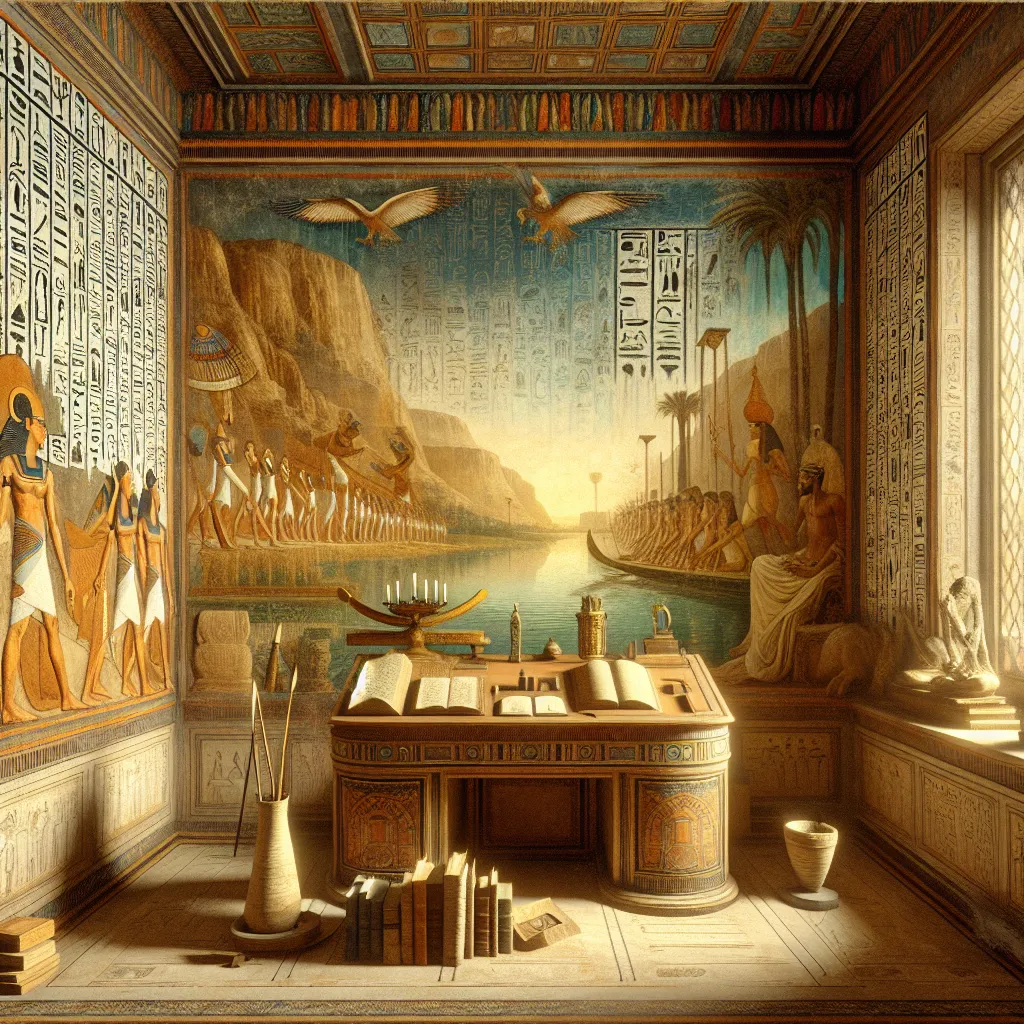
- Published on
- Authors

- Name
- You
Introduction
In the world of ancient spiritual practices, breathwork occupies an essential corner. Both Egyptian breathwork and Pranayama from Indian yoga traditions have been gateways to profound states of meditation, spiritual communion, and overall well-being. While these practices emerge from incredibly diverse cultures, they share intriguing parallels and notable differences that illuminate their unique philosophical and practical aspects.
The Philosophy of Breath
Pranayama: The Yogic Science of Energy Control
Pranayama, derived from the Sanskrit words "Prana" (life force) and "Yama" (control), is integral to the yogic discipline. According to the ancient texts such as the Hatha Yoga Pradipika and the Yoga Sutras of Patanjali, Pranayama serves as a bridge between the physical practices (Asanas) and the meditative states (Dhyana).
| Concept | Pranayama (Indian Yoga) |
|---|---|
| Life Force | Prana |
| Objective | Regulation of Prana through breath control |
| Key Techniques | Anulom Vilom, Kapalabhati, Bhastrika, Ujjayi |
| Philosophical Texts | Hatha Yoga Pradipika, Yoga Sutras of Patanjali |
Egyptian Breathwork: The Silent Invocation of Gods
Egyptian breathwork, less often discussed but equally profound, is rooted in the extensive spiritual traditions of ancient Egypt. Sacred texts and hieroglyphics hint at practices aimed at achieving an altered state of consciousness to connect with deities like Thoth and Ra.
| Concept | Egyptian Breathwork |
|---|---|
| Life Force | Ka (spirit), Ba (soul) |
| Objective | Invocation and communion with spirits and gods |
| Key Techniques | Rhythmic breathing, Chanting, Visualization |
| Philosophical Texts | Pyramid Texts, Book of the Dead |
Techniques and Practices
Key Techniques in Pranayama
- Anulom Vilom (Alternate Nostril Breathing): This practice balances the Ida and Pingala Nadis, regulating bodily functions and calming the mind.
- Kapalabhati (Skull Shining Breath): A forceful breath technique that purifies the respiratory system and energizes the mind.
- Bhastrika (Bellows Breath): Engages abdominal breathing to foster increased oxygenation and mental clarity.
- Ujjayi (Victorious Breath): Creates a slight throat constriction, producing a sound resembling ocean waves, which induces tranquility and introspection.
Key Techniques in Egyptian Breathwork
- Rhythmic Breathing: Synchronizing breath with a specific rhythm to attune to cosmic cycles.
- Chanting: Using sacred chants, often the hieroglyphic names of gods, to elevate the consciousness.
- Visualization: Imagining oneself merging with divine entities or traversing the Duat (spiritual realm).
Scientific Insights: Bridging Ancient Wisdom with Modern Science
Both Pranayama and Egyptian breathwork have been scrutinized by modern science, which reveals their profound impact:
Pranayama
- Neuroplasticity: Studies show that regular practice enhances cognitive functions and emotional regulation.
- Respiratory Efficiency: Increases lung capacity and improves oxygenation.
- Stress Reduction: Activates the parasympathetic nervous system, reducing stress hormones.
Egyptian Breathwork
- Heart Rate Variability (HRV): Rhythmic breathing techniques enhance HRV, a marker of cardiovascular and autonomic health.
- Mystical Experience: Research into auditory processing during chanting reveals increased theta-wave activity, associated with meditative states.
- Psycho-spiritual Alignment: Visualization practices strengthen mind-body coordination, fostering psychological resilience.
Conclusion
The exploration of Pranayama and Egyptian breathwork reveals a tapestry of ancient wisdom that remains relevant today. While the cultural contexts and specific techniques vary, both traditions emphasize the breath as a bridge to higher states of consciousness and holistic health. By integrating these ancient practices with modern scientific understanding, we can enrich our spiritual and physical well-being.
Embark on this journey of breath and spirit—whether through the disciplined practice of Pranayama or the mystical invocations of the ancient Egyptians, find the breath that resonates with your soul.
Disclaimer: This article is intended for educational purposes. Always consult with a professional before undertaking any new health or wellness regimen.
